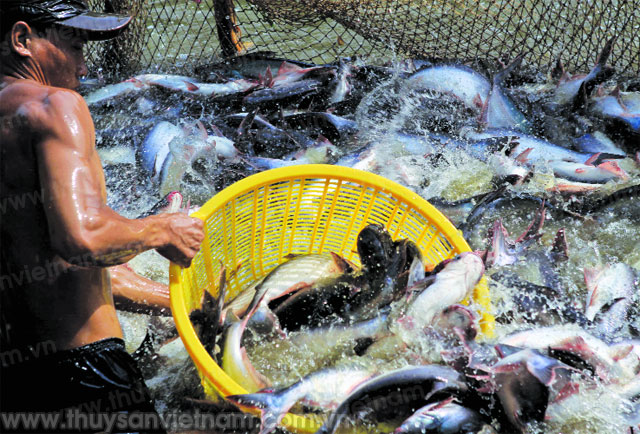Tra fish need to be produced in VietGAP model for sustainable development and stable sale. However, the implementation is not so easy.
Pham Van Tuan, Deputy Director General of Directorate of Fisheries: VietGAP creates sustainable market
The Directorate of Fisheries and the representatives of the Global Aquaculture Alliance (GAA) in Vietnam – which builds the Best Aquaculture Practices (BAP) standards – are working on the mutual recognition between BAP and VietGap standards. This is to create “clean” products with food hygiene and safety assurance and develop a stable market. In this way, the relevant parties will review and consider how to compare the provisions to control the regulations of these two standards. This must be done quickly and clearly for public announcement. Once achieved, the recognition will allow the VietGap products to be exported to the whole world, and mark the implementation of Decree No.36/2014/ND-CP on April 29, 2014, by the Government concerning Tra fish production, processing, and sale.

Small scale Tra fish farmers face difficulties when switching to VietGAP model – Photo: Duy Khuong
Tran Thanh Hai, Manager of Can Tho Seafood Branch: VietGAP application can’t be done overnight
Clean and safe production is the obvious trend agriculture in Vietnam and the rest of the world is reaching out to. So Tra fish farming must comply with the VietGAP model to gain the basic standard assurance in order to penetrate the most difficult markets. The enterprises are perfectly able to apply the VietGAP standards into the Tra fish cultivation and processing; but it is not the case for farmers as it is quite difficult for them to switch from the traditional farming to the VietGAP model. Their facilities (ponds, sewage treatment basins, and production practices) were established years ago, so the high cost of building another production system under the VietGAP model will be a problem for farmers. Many of them do not have enough money to transform their existing system. On the other hand, the price for certification has not been managed; while that of material Tra fish which has not been recognized is still low. The development of the VietGAP model has not been enthusiastically responded to by farmers or assured. This cannot be implemented overnight, it needs time.
Ho Van Vang, Vice Chairman of Vietnam Tra fish Association: Overcome difficulties to approach certificate
In 2015, the VietGAP standards will be made known to every farming individuals and households by Vietnam General Department of Fisheries. The provincial People’s Committees and Ben Tre Aquaculture Branch continue to give instructions to the localities for the plan implementation. Any difficulty must be solved upon requests from households and farm owners. Farming facilities, which have already been granted VietGAP certificates, should be directed to the BAP and GlobalGAP standards to meet market’s requirement and regulations. However, the certification must be granted together with assistance and preference as many VietGAP farming facilities fail the higher standards. BAP and GlobalGAP will bring farmers the obvious benefits, so the competent authorities should develop the policies to help farmers overcome difficulties when their VietGAP farming facilities are applied for higher standards. In this way, the benefits will come closer to farmers. The purchasers and processors must study the requirements to buy Tra fish at reasonable price, so that the production chain will bring benefits to all.
Nguyen Van Hong, Chairman of Tan Phat Fisheries Cooperative: Standardized farming more effective
As many as 5.5 hectares of Tra fish farming area have been applied with the VietGAP model in Tan Phat Fisheries Cooperative since the plan was started. The fish is now sold at 22,800 – 23,000 VND per kilogram, from which the farmers will have profits of 1,000 – 1,500 VND per kilogram. At its peak, the cooperative stocks about 800,000 fingerlings on the monthly basis, harvesting 300 tons per each. However, it is quite difficult to apply other standards such as GlobalGAP and BAP as the local farming areas are scattered. The VietGAP model requires the farmers to strictly follow its regulations of diary, medicine and feed, but the fish price is not higher than usual. However, standardization will push the sale of fish. If the farmers are given assistance or advices of standards by national authorities or enterprises, they will receive more benefits from GlobalGAP and BAP application as their fish will meet typical requirements of the market.
|
>> Only 20 percent of Tra and Basa fish farming households are granted certificates by the independent third-party. So as many as 80 percent of them does not follow any standard. |